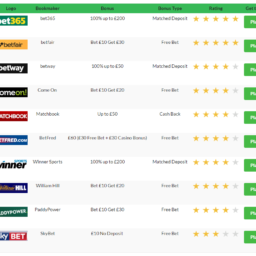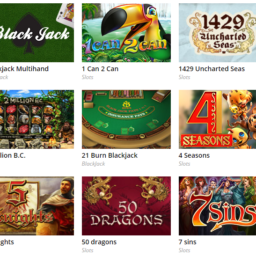Meet the giant clam, the building block of our oceans
These clams are considered custodians of the reef: They provide food as well as lodging to fish.
If we take a ruler and measure out five feet (or 1.524 meters to be Google-exact), this abstraction roughly translates to less than the average height of a person. If a grown man were to stand in five feet of water, this measure equates, more often than not, to the average depth of a swimming pool. He would be able to stand upright without effort—and there would be nothing to it.
But what if I told you that this depth—this swimming pool depth—is crucial to the survival of a struggling animal that bears the burden of giving life to our coral reefs?
Meet the giant clam, more commonly known as “Taklobo.†Endemic to the waters of the Philippines and in other parts of the Pacific and Indian Ocean, these clams bear the weight of helping cultivate life in our coral reefs. They are custodians of the reef: They provide food as well as lodging to fish. Because they are filter feeders, they also clean the reef.
Imagine at your infancy, after floating around in the water column and latching onto a piece of rock or substrate, you’re permanently fixed to that spot till the day you die. Imagine your death coming more than a hundred years later. Also, imagine being the most immovable object on the reef at roughly 400 lbs and a meter in length. As sad as it sounds, such is the life of a giant clam, being both the provider and the provided, with the sole mission of feeding the reef and cleaning its waters.
There are eight species of giant clam in the Philippines, but the largest and most recognizable of the mollusks is the Tridacna gigas. Because of its size, Tridacna gigas has served as the poster boy of many conservation efforts–the two large shells with four to five ridges forming a rather compressed sin wave pattern are rather iconic as they’ve been overused in cartoon tropes as thrones for the mermaid king, safety deposit boxes for giant pearls and giant terrors that trap divers, consuming them slowly with their clammy gastric juices.
But of course, this is all far from the truth. It is physically impossible for the largest of the giant clams to completely close its shells due to the sheer size of their colorful mantles.
In days past, divers used to become wary of the gigas in fear of getting a fin or a hand trapped inside its grip. In panic, they would see this as an act of aggression and try to pry themselves from the shell, harming the creature in the process. It’s been proven, however, that these clams act defensively to protect themselves and these short convulsions end in the relaxing of the grip. As always, man has a tendency to misunderstand the unknown, treating everything as the aggressor, when in fact it is he himself who is at the apex of nature’s cycle.
How giant clams help the reef:
- Their large shells act as building blocks for coral reefs where sponges and corals can latch onto and grow
- The ridges of their shells are ideal locations for laying eggs
- The giant clam itself is a home to food-producing algae which the entire reef relies on for food
- The shell provides hiding places for juvenile fish from predators
- When giant clams spawn, they do so simultaneously and the release of reproductive cells into the reef also serve as food for fish
- Being filter feeders, they help clean the reef waters
- Because they attract so many different marine life into the reef, an ecosystem is formed with them as a crucial part of the circle of life
A nursery of 30,000 miracle workers
This sacred place was probably a series of wetlands tens of thousands of years ago. The clear, shallow waters stretched out in all directions for hundreds of meters. In time, the mangroves probably bunched up into a series of islands and, as more time passed, people inhabited the small island known today as Silaki, which provided ideal living conditions for fishing and habitation as it was only 30 minutes away by boat to the mainland.
I could make out the natural breakwater in the form of frothing sea foam protecting the area from strong waves and current that could potentially topple the sensitive life just five feet below us. The conditions are perfect: the reef is also known as Silaki, named after the town situated on the small island several hundred meters away. Although absent of coral life, this place serves as the nursery of the Bolinao Marine Lab, an initiative seeded by Dr. Edgardo Gomez in the ‘70s when he founded the UP Marine Science Institute (UP-MSI). On the boat with me were two of UP MSI’s young faculty members: Dr. Cecilia Conaco, deputy director of the Bolinao Marine Lab, and Patrick Cabaitan, assistant professor at UP MSI.
The nursery is an expanse of several giant clam species all in different stages of maturation. The smaller clams are clumped in nets to protect them from predators. When they reach a certain size, they are removed and placed in the open water together with the rest of the larger clams. There are no corals, but the reef is littered with clumps of anemone and their clownfish residents, sea urchins, and reef fish that have made homes within the apartment complex of clams.
“In the early ‘70s, there was this nationwide survey of marine organisms and the giant clams were identified as locally extinct. So that triggered the effort in culturing giant clams to bring back their populations,†Cabaitan says, adding that due to the efforts of several decades ago, there are now more than 40 restocking sites, which are partner institutions that help cultivate the giant clams, bringing them out of ‘vulnerable’ status.
“So what’s interesting right now is that we are seeing some sites where juvenile clams have been produced from these original stocked clams.â€
As a diver and underwater photographer, I’ve often participated in “save the earth†initiatives such as reef and shore cleanups during Earth Day, “Crown of Thorns†cleanup drives (a rather dangerous initiative where divers remove hundreds of invasive and highly poisonous starfish called “Crown of Thorns’†from the reefs), and last but not the least, giant clam seeding programs. The latter is usually an initiative organized by beach resorts that want to beautify their house reefs. Many resorts today, including Punta Fuego, Hamilo Coast, and Anvaya Cove do have giant clams in their house reefs.
Resorts often purchase mature giant clams, mostly the Tridacna gigas and delicately transport them from Bolinao to wherever the resorts are located in the Philippines. Because the clams are sensitive, not all make it to their new homes alive. Those that survive are seeded onto the reef, embedded into the substrate so they do not fall over. Giant clams are like plants that need a lot of sunlight, so positioning these animals on the reef is crucial:
- They need to be placed at a shallow depth with a lot of sunlight, so roughly 10-20 meters in depth.
- They need to be embedded securely so that the water current or waves do not topple them over. At a certain size, giant clams have no motor functions so if they fall over, they will perish.
- They need to be placed at close proximity to one another because when it is time to spawn, all the clams send signals to one another – simultaneously releasing thousands and thousands of reproductive cells into the water column.
In time, these clams perform custodial functions and are the foundations of the coral reef. Conaco adds that although they are like our ocean’s miracle workers, they can only work their magic in reefs that were considered to be once healthy, or where giant clams were naturally endemic. So if you placed hundreds of giant clams in Manila Bay, hoping these would clean up the water, they would all die.
And here I was, on top of over 30,000 giant clams, which were transferred from the Bolinao Marine Lab hatchery about 30 minutes away by boat. The nursery of thousands of clams is considered to be a tourist attraction and UP MSI does have difficulty in regulating the area, especially to careless tourists who, for the sake of a selfie, or rather “clamfie,†will try to lift a 100 kilo clam out of the water. Which is of course not only dangerous and life threatening to the clam, but to the tourist as well.
“Most of the work that has allowed the giant clam project to be this big were old projects that were supported by students and research. What we really need is sustained support for this because it’s not a small thing to be taking care of clams. We need a lot of manpower and funding support so it would be nice if people were interested in supporting this.â€
Conaco adds that some of the funding is given to the townspeople of Silaki who become deputies of the clam nursery. There is always threat from tourists and poachers to come in and grab a few clams, which are used for two things: ornaments and food. Remember those holy water vessels inside your provincial church? That’s probably a giant clam shell.
There are several global efforts aimed at increasing the population of the giant clams. There have been successes in Palau as well as the Solomon Islands. It is in the Philippines, however, that there has been the most success because the Bolinao Marine Lab is able to cultivate and care for the Tridacna gigas, the largest of the species.
The Bolinao Marine Lab is located at the UP-MSI in Bolinao, Pangasinan. To visit the campus, running seawater hatchery and the nursery in Silaki, please visit their website at msi.upd.edu.ph and schedule an appointment.
This article originally appears as a feature piece for Earth Day 2017 for Manila Bulletin.











